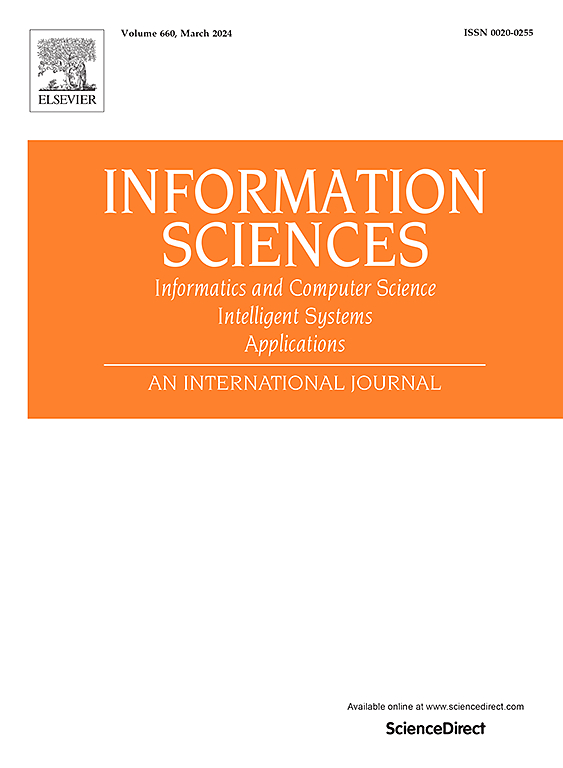A granular-ball generation method based on local density for classification
IF 8.1
1区 计算机科学
0 COMPUTER SCIENCE, INFORMATION SYSTEMS
引用次数: 0
Abstract
As a new branch of granular computing, granular-ball computing (GBC) has become increasingly popular due to its high efficiency, robustness, and scalability. However, in classification tasks, the existing mainstream methods for generating granular-ball (GB) have two common issues: GBs generated by the existing methods are not accurate enough to describe the distribution of the original data and there are de-overlap operations in the existing GB generation process, which increase the workload of the GB generation process. Therefore, to solve the above two issues, a GB generation method based on local density (LDGBG) is proposed in this paper. First, centers of GBs are selected based on local density to ensure the generated GBs are more consistent with the original data distribution. Second, the method for calculating radii avoids overlaps and incorporates the idea of compact within class and decentralized between classes, which will improve classification performance. Furthermore, a sparsity index is introduced to assess the sparsity of datasets, thereby enabling more effective utilization of original samples in sparse datasets. Finally, comparative experiments are conducted on 27 benchmark datasets and the experimental results show that LDGBG is superior to the existing mainstream models in effectiveness and robustness.
基于局部密度的颗粒球生成方法进行分类
作为颗粒计算的一个新分支,颗粒球计算(GBC)以其高效、鲁棒性和可扩展性得到越来越广泛的应用。然而,在分类任务中,现有的主流颗粒球生成方法普遍存在两个问题:一是现有方法生成的颗粒球不足以准确描述原始数据的分布;二是现有的颗粒球生成过程中存在去重叠操作,增加了颗粒球生成过程的工作量。因此,为了解决以上两个问题,本文提出了一种基于局部密度(LDGBG)的GB生成方法。首先,根据局部密度选择gb中心,保证生成的gb更符合原始数据分布;其次,计算半径的方法避免了重叠,并结合了类内紧凑和类间分散的思想,提高了分类性能。此外,引入了稀疏度指数来评估数据集的稀疏度,从而能够更有效地利用稀疏数据集中的原始样本。最后,在27个基准数据集上进行了对比实验,实验结果表明,LDGBG在有效性和鲁棒性方面优于现有主流模型。
本文章由计算机程序翻译,如有差异,请以英文原文为准。
求助全文
约1分钟内获得全文
求助全文
来源期刊

Information Sciences
工程技术-计算机:信息系统
CiteScore
14.00
自引率
17.30%
发文量
1322
审稿时长
10.4 months
期刊介绍:
Informatics and Computer Science Intelligent Systems Applications is an esteemed international journal that focuses on publishing original and creative research findings in the field of information sciences. We also feature a limited number of timely tutorial and surveying contributions.
Our journal aims to cater to a diverse audience, including researchers, developers, managers, strategic planners, graduate students, and anyone interested in staying up-to-date with cutting-edge research in information science, knowledge engineering, and intelligent systems. While readers are expected to share a common interest in information science, they come from varying backgrounds such as engineering, mathematics, statistics, physics, computer science, cell biology, molecular biology, management science, cognitive science, neurobiology, behavioral sciences, and biochemistry.
 求助内容:
求助内容: 应助结果提醒方式:
应助结果提醒方式:


